Solar-powered houseboat can go 31 miles per day on sunshine
This transformer dwelling is a tiny home on the water.
Fact checked by Katherine Martinko
It is time to learn from the tiny house movement or trailer parks and look at different models of home ownership that separate the cost of land and servicing from the cost of the dwelling unit, dramatically lowering the cost of housing. This is also true of the houseboat, where there is no land at all.

Crossboundaries, an international firm based in Beijing and Frankfurt, has done big projects, like the urban skypark on a roof in Shenzhen that was three-fourths of a mile long. We have also shown their own workspace with transformable spaces. Now, they have gone tiny with Fangsong—a tiny home on the water currently floating near Berlin.
They have had some fun with it:
"This compact space is a perfect match for Crossboundaries because it allows for testing flexibility in micro-dwellings where each room assumes multiple programmatic roles. The appeal of water in this project is to explore the possibility of adapting, while challenging assumed and conventional norms."1

It is a transient space:
"Itinerant forms of architecture were first performed out of necessity and, more recently, out of willingness—the current architectural agenda debates our notions of public-private and temporary-permanent. A home that was once linked to real estate ownership now shifts to a network of commodities that can be moved to different places."1
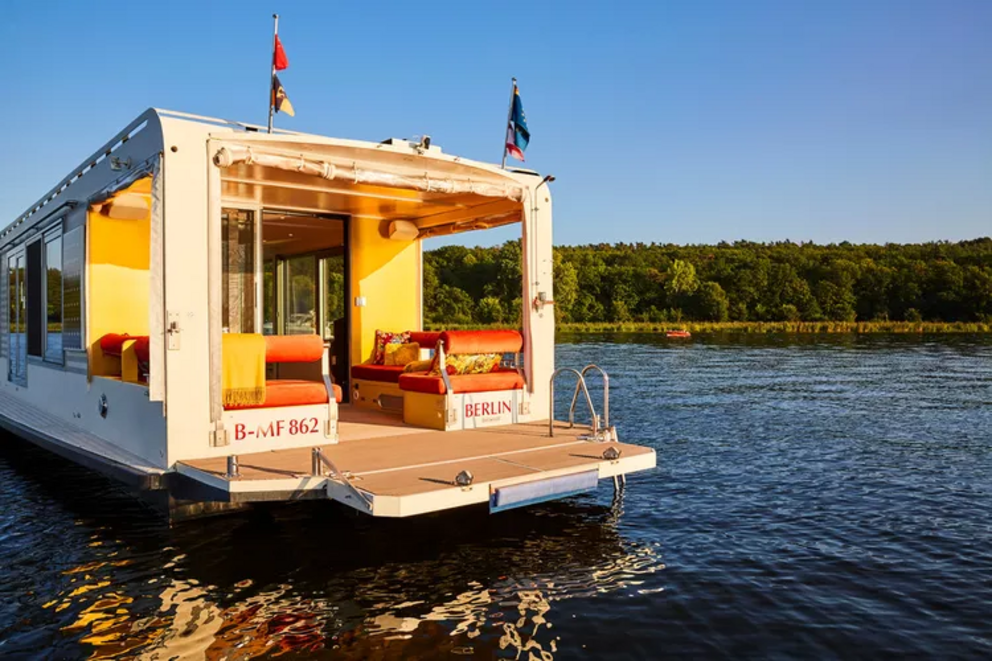
The architects then allude to Archigram's walking city: "One of the great attractions of urban living is the notion of being able to easily access all the services and goods you need. But what if those services came to you?" But a much better allusion is to Archigram's Plug-In City, where the house moved to where the services are, "containing modular residential units that 'plug in' to a central infrastructural mega machine." That's what a houseboat does—it moves—and the services and goods don't.
Notwithstanding our dueling allusions, there is a lot to like in this 50-foot-long by 13-foot-wide floating home. The roof is covered with solar panels, enough so that it can travel 31 miles per sunny day.
"The boat is 'smart and self-powered' due to a set of innovative solutions in terms of solar energy, heating source, water, and waste management."1
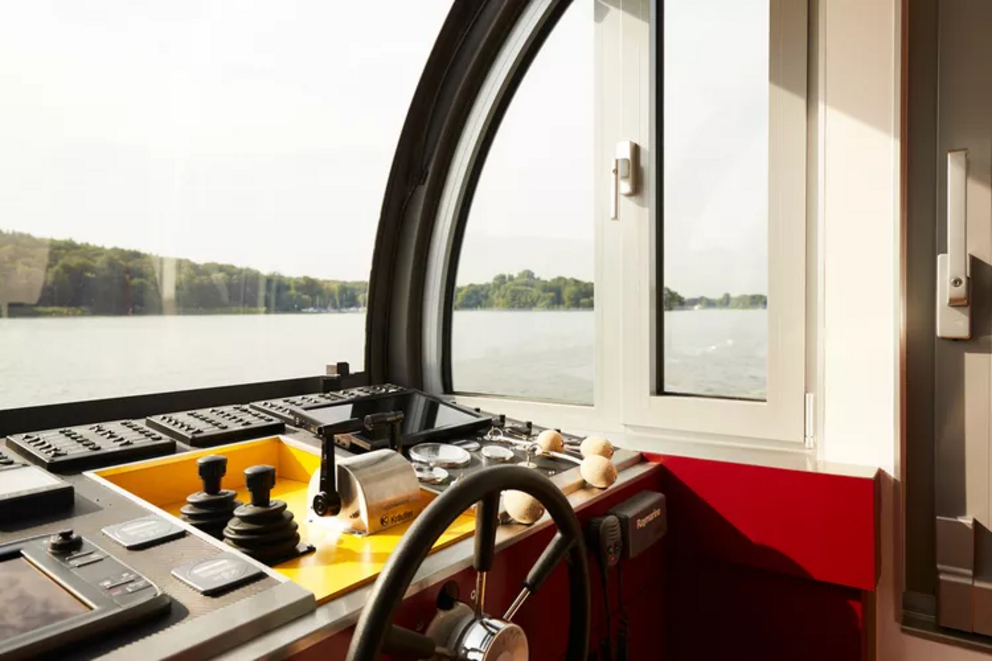
The inside is full of flexible spaces and transformer furniture serving multiple functions, some of which are strange. Take the boat's helm here, with all the switches, controls, radios, and everything that makes it a boat. This is stuff that people use a lot, even when a boat is parked. Not here.
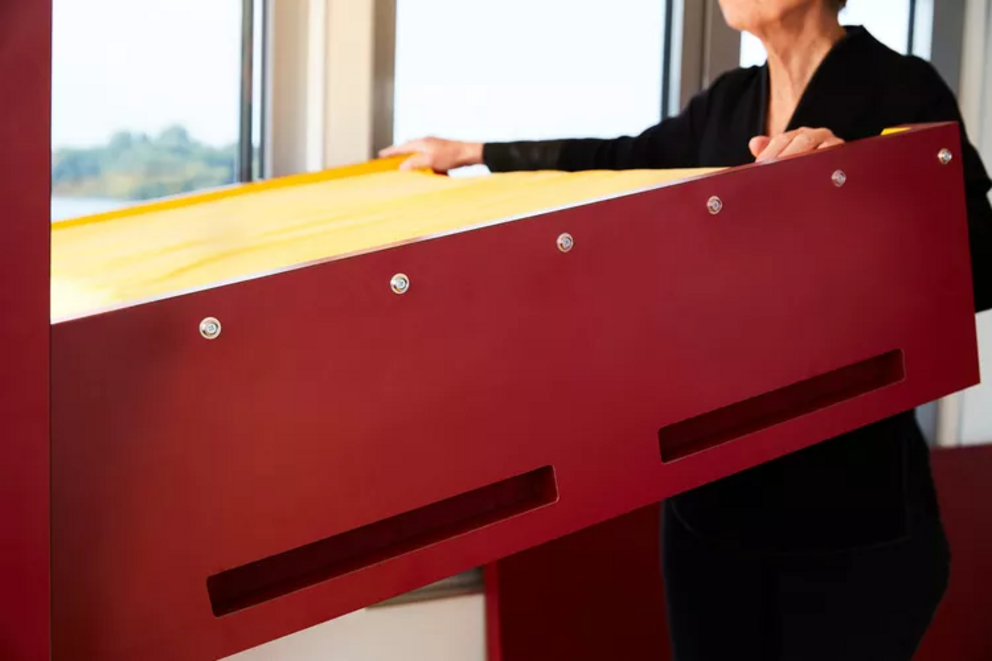 A bed is folding up.
A bed is folding up.
"Functionality improvements include a fully hidden bed with a function to close the 'helmstand,' which hides the more technical equipment of the boat, achieving a calmer sense of home."1
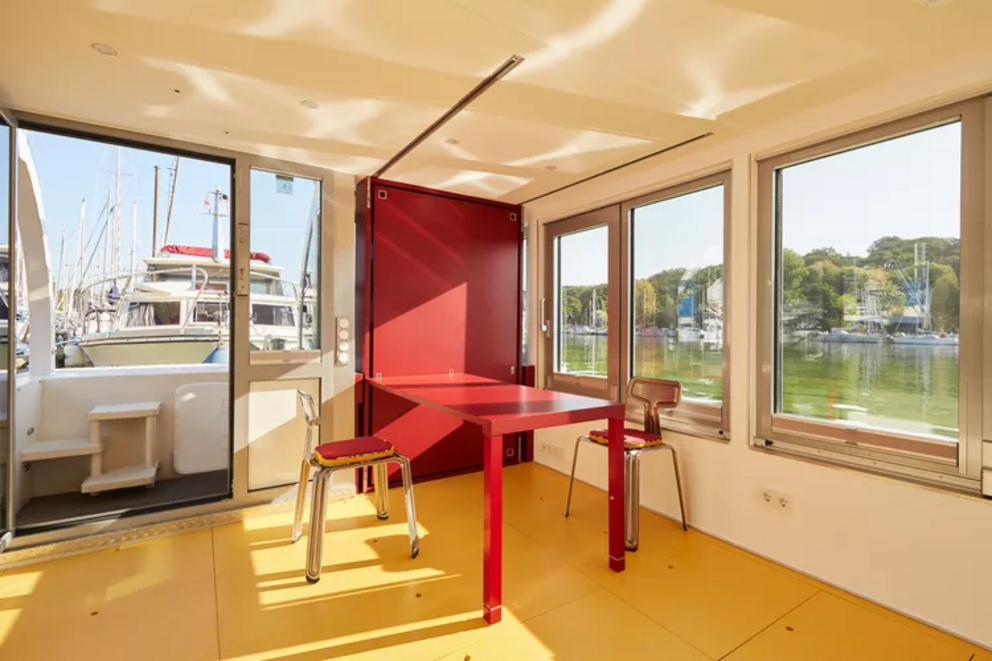 The kitchen table is removable.
The kitchen table is removable.
"Additionally, it includes a pop-up table for the kitchen area, and a hidden foldable desk included in a cabinet, providing a 'work-from-home' environment."1
 The steering wheel is under the bed.
The steering wheel is under the bed.
So if someone pings you with a storm warning or you want to check the batteries, you have to fold up your dining room table or bed to get at all the controls and gauges. This seems like a bad idea, all to make it not look like a boat when boatiness is one of its main characteristics.
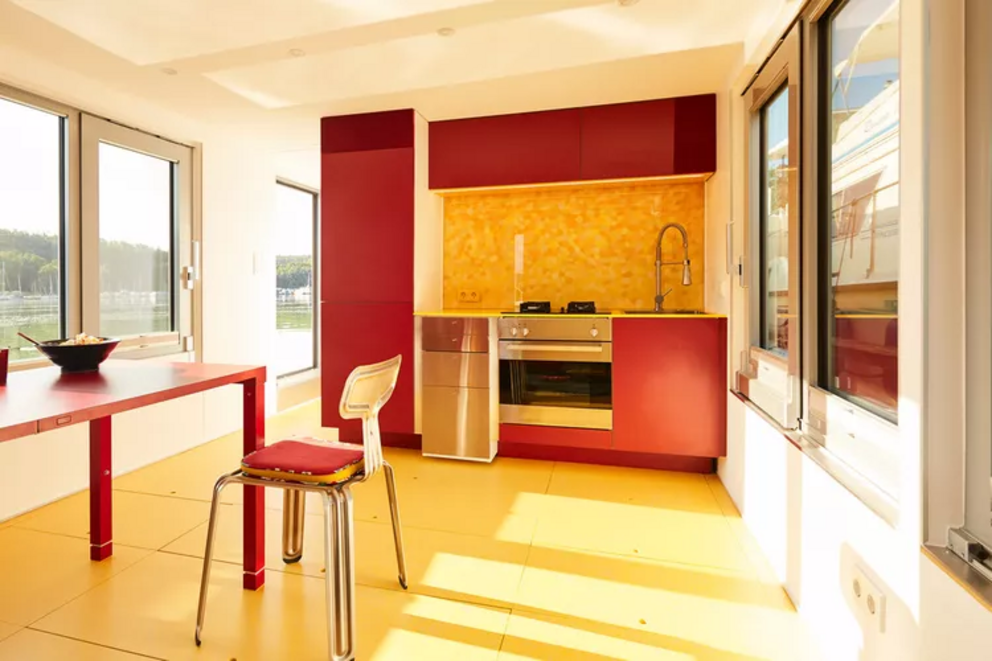
In any case, there is lots of room for them to get a separate kitchen table.
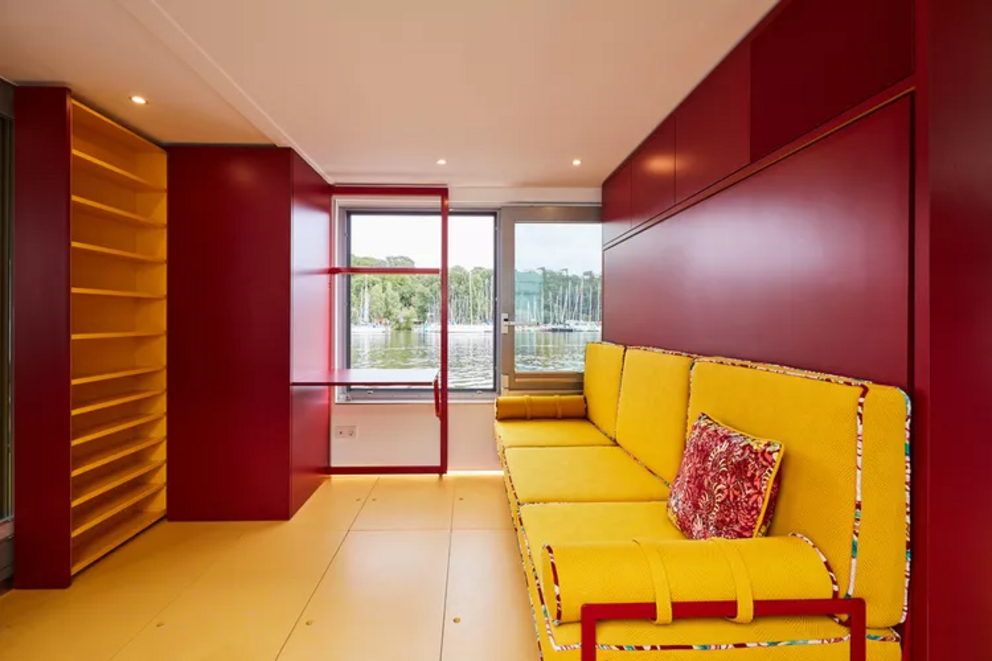 Cabinet with foldable desk.
Cabinet with foldable desk.
In the other space, there is a folding double bed behind the sofa and a folding desk for work.
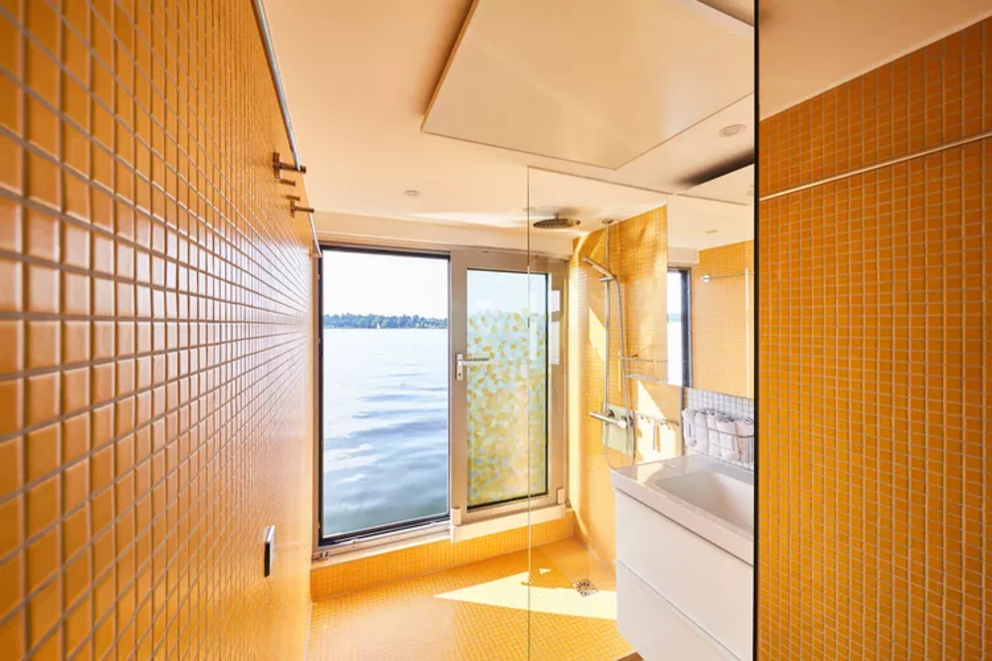
"A pellet stove, remotely controlled by an app, was installed to satisfy heating demands with a source of renewable energy. In the future, the owner plans to add a water purification system and a biological sewage treatment unit to upgrade the boat for long journeys."1

The architects conclude: "This 'Tiny Home on the Water' can be conceived as a unit of the city, containing a comprehensive set of urban resources." If I were sitting on that back deck with a glass of wine, I would think it was the exact opposite. However, the design itself is transferrable, and "ideally, in the future, people can free themselves from too many possessions and embrace denser, high-quality spaces that enable more flexible ways of life."
More images and information at v2Com.
For full references please use source link below.
Video can be accessed at source link below.

